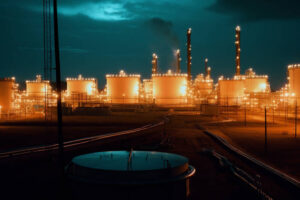Welcome to the Extreme Investor Network, where we break down the latest trends and developments in the stock market and trading world. Today, let’s take a look at the recent report from the U.S. Energy Information Administration (EIA) and how it is impacting natural gas prices.
The most recent EIA report showed a storage build of 55 Bcf, which was smaller than expected. This brought total inventories to 3,547 Bcf, but despite this reduced build, storage levels still remain above the five-year average. This has helped to prevent any major price spikes, with the market struggling to break through the $3.00 level due to strong technical resistance.
Weather patterns have been a key factor in recent price movements, with cooler temperatures forecasted for some parts of the U.S. This is expected to drive modest demand for heating, although overall demand remains lower than expected due to mild weather in much of the country. However, in regions like Texas and California, heat-driven demand is still present, but not enough to significantly impact prices.
In addition to weather developments, Tropical Storm Milton is expected to strengthen into a major hurricane, potentially posing a threat to Florida. While the storm could cause power outages and lower demand for natural gas, the affected area does not have major natural gas infrastructure, so production is not likely to be disrupted. This could be a bearish factor for demand in the short term.
From a technical standpoint, key resistance levels are holding firm, making it difficult for natural gas prices to make significant gains. Traders and investors will need to closely monitor these levels for any potential breakouts or reversals in the market.
Stay tuned to the Extreme Investor Network for more in-depth analysis and insights into the stock market, trading strategies, and all things Wall Street. Our unique approach to breaking down complex financial topics will keep you informed and ahead of the curve in your investment journey.

